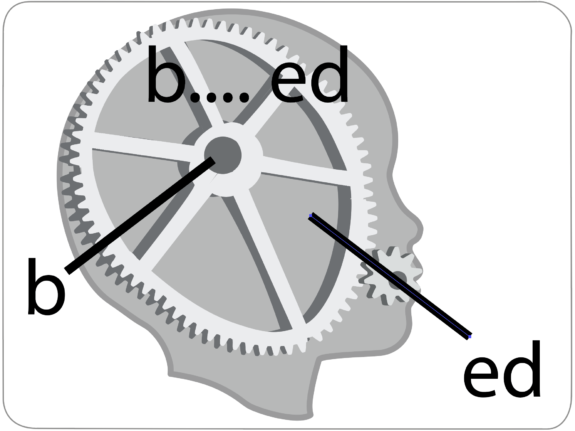
Apraxia / Dyspraxia
Childhood Apraxia of Speech: A frequently made diagnosis
Extending the notion of motor planning and execution to speech
By the notion of apraxia or dyspraxia, speech involves both planning and executing the various articulations of speech in the correct order, with each execution precisely timed and judged.
This is a frequently-made diagnosis. Motor planning issues are commonly postulated in relation to a broad range of disorders, using the medical terms Apraxia and Dyspraxia for difficulties carrying out a single action, such as raising the hand to the mouth on command, when the same action can easily be carried out in the context of a familiar activity such as brushing one’s teeth.
Characteristic problems include not being able to:
- Join the B to the ED in bed or the F to the OUR in four, in other words to join an initial consonant to the following vowel to form a simple syllable. This ‘process‘ is known variously as ‘Initial Consonant Deletion’ and ‘Onset Deletion’;
- Pronounce a syllable or word with more than one sort of consonant, for instance, saying bottle as BOP, missing the -LE or the ‘rime’, as this is known, of the second syllable, and turning the T into a P, a lip action sound like the B. Building the speech sounds in syllables the wrong way can have a bizarre effect. There are three articulators used to completely block the air stream in English (as in most languages) – the lips, the tongue tip, and the back of the tongue. The three articulators can assimilate or harmonise with one another. But in severe cases this can go in all logically possible directions BE, making the speech utterly incomprehensible, even to loving parents;
- Pronounce a syllable with a lip action consonant like M, P, or B, and an unrounded vowel like EE or with a tongue tip action consonant like N, T, or D, and a rounded vowel like OO. Such a child can say M00 and knee, but pronounces me as EE and no as OH, deleting the initial consonant in both cases. Given that rounding involves the lips, though in an opposite way from the action in consonants, this amounts to a restriction on syllables with consonant and vowel differing with respect to any involvement of the lips;
- Pronounce any words with more than one syllable, effectively treating the syllable as a word – plainly not by a motoric disorder.
And many more. These problems are often categorised in relation to ‘motor planning’. But the justification for that seems unclear to me, since it throws no light on the points at which there is a plausible, non-motoric linguistic account.
Significantly, these problems often occur alongside difficulties joining words into sentences and recognising that particular sound structures sometimes sound like one another. These instances of seemingly diverse issues occurring together are known as ‘co-morbidities‘. The very clear evidence here, summarised in Nunes (2023), was one of the main motivations of Nunes (2002). But it is not obvious what the commonality might be across a difficulty detecting a similarity of sound structure and a problem of ‘motor planning’. That is part of the reason for my scepticism about the theory here.
A common scepticism
The common scepticism (which I share) about the proper definition of apraxia / dyspraxia obviously bears on the question of whether such a diagnosis is appropriate in at least some of the cases where it is applied.
I personally think that there is a serious underestimate here of what is actually going on in the mind of the speaker. For instance, the speaker ‘knows’ that the S sound at the end of strengths is added on as what is known as a suffix according to how the word is used, rather than as part of the root, represented by the phonotactics of English, and as stored in the lexicon of words.

